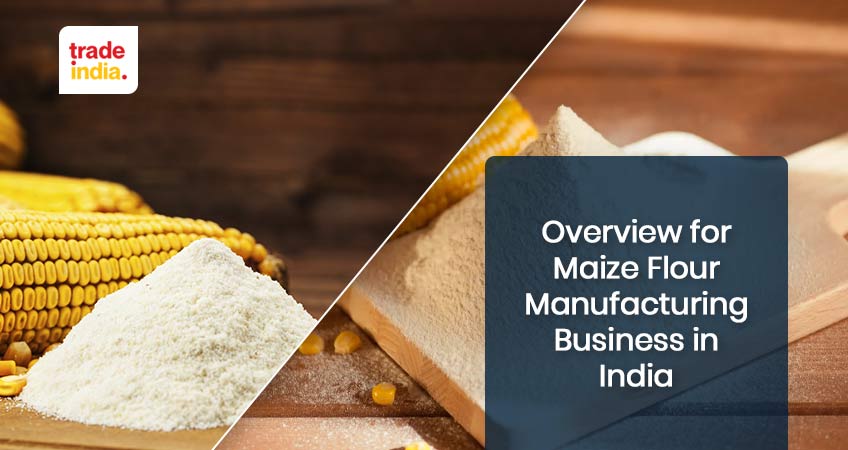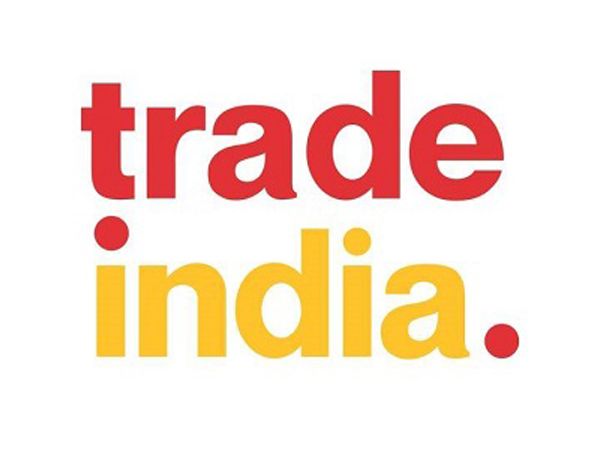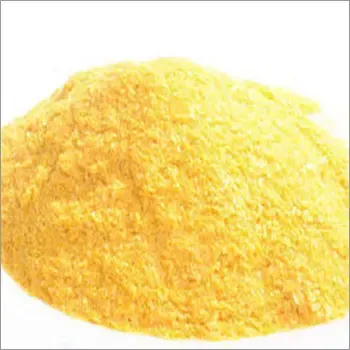
Introduction
Maize flour, often known as masa, is made by grinding dried corn into fine powder. Lime taste may be omitted from the flour used for baking; however, lime is commonly absorbed into corn tortillas and shells during the softening process.
Many culinary items and baking mixes that cater to those with wheat or gluten sensitivity utilize this flour in its place, formerly used mostly in the creation of Mexican and other Latin American meals.
Ground corn kernels are used to make finely ground corn flour. Dried yellow dent corn, a kind with a slight dent on the top of the kernel, is the most common source of corn flour.
Metal rollers are used to crush entire corn kernels into a maize flour fine powder after the tough outer hull and nutrient-rich germ have been removed.
There are fewer sources of stone-ground, whole grain corn flour. It is more nutrient-dense and higher in fiber, but its shelf life is shorter.
Maize Flour Market Overview
For the years 2019–2024, the Indian corn market is expected to increase at a CAGR of 3.9%, from an estimated $1.37 billion in value in 2018.
Important takeaways.
- The corn starch business in India is expected to grow in response to the growing demand for maize starch in food and beverage applications.
- The participants in the India Maize Corn market are relying on long-term expansion methods such as joint ventures and acquisitions.
- In terms of potential as a developing Corn market, analysts believe that North India has the best chance of achieving the highest and most rapid CAGR.
Top 7 Maize Flour Manufacturers In India
- Aashirwad Atta
- Patanjali Atta
- Shakti Bhog Atta
- Annapurna Farm Fresh Atta
- Blue Bird
- Tops
- Brown and Polson
Overview for Maize Flour Manufacturing Business
As an example of its many health advantages, it aids in the maintenance of healthy cholesterol and blood pressure, protects against arteriosclerosis, reduces the risk of colorectal cancer, and may even be beneficial to those with diabetes.
Corn is a staple meal in many nations, and is sometimes referred to as the "golden crop". Corn or maize is in high demand because of the nutritional value and other advantages it offers consumers.
Nutrient-dense, they also have additional beneficial qualities including cellulose, lecithin, linoleic acid, grain alcohol, and vitamin E.
An advantage of the Maize Flour factory is that profitability and scalability within a reasonable corn flour price are entirely dependent on the types of decisions you make.
Your earnings will be better if you employ high-quality machinery to produce Maize Flour, and you will be able to earn a significant amount of money in the process.
In many nations, like India, maize is also a staple grain, making it a cuisine that will never go out of style. It is also utilized in other goods as an extra or supplement.
1. Setup Costs for a Flour Mill
As the capacity of the mill increases, the price of a flour mill increases as well. The cost of a small-scale manufacturing flour mill is significantly lower than that of a medium- or large-scale plant.
To start a flour mill plant, you'll need a lot of money, so if you don't have it but don't want to lose out on the lucrative opportunities, you may get a bank loan or find a trustworthy business partner who is also interested in flour milling.
F6FC tiny flour mill machine costs between $2,500 and $3,000. Purchasing the M6FX small flour mill factory should set you back between $3,500 and $5,000 (USD).
But for large-scale flour mills, the cost is prohibitive. Automatic wheat mill machinery, for example, can cost anything from $19,000 to $1,448,000 for a large-scale flour mill.
2. Affidavits and Licenses
Always double-check your state's laws. The following is a list of the most fundamental prerequisites.
- Start by deciding on your business structure and registering with the ROC.
- Apply for a business license from the local government.
- You need to register for Udyog Aadhaar MSME online.
- Become a member of the Food Safety and Standards Authority of India.
- You must apply for the AGMARK program to be eligible.
- The BIS certification can be obtained by doing so.
- Taxes should be accounted for.
- This company doesn't require a pollution permit. However, you should double-check with your local State Pollution Control Board.
- Make an application for a GST registration number.
3. The Method of Cleaning
You must begin by thoroughly cleaning your most critical raw ingredient, which is corn. It's important to eliminate any excess particles that may be present in the maize to ensure that the final product is of high quality.
In addition to being dangerous to humans, these particles can also harm your equipment. Depending on your company's size and maize flour benefits for health, you may need to use a different sort of sieving method to remove these particles or contaminants.
4. Preparation for Physical Activity
In what ways have eaten corn caused you to get bloated in the past? Low- or poor-quality maize that has not been separated into germ meal, endosperm, and bran is to blame for this outcome
The bran is easily peeled off the grain once it has been moistened and then soaked. Thus, the maize will be recognized as high-quality maize as a result of this procedure.
5. Mixing
The next step is to add the maize, which is the final ingredient. As soon as all the dust, bran, and germ meal have been removed, the remaining raw ingredients may be added to the freshly cleaned maize.
The machine's conveyor belt is used to move the raw materials into the machine, where the processing continues.
Machinery & Equipment:
- Reel machine (3 Segments)
- Rotary Separator with Aspiration Channel
- Weighing Scale
- Dust cyclone
- V-Groove, Pulleys, Couplings, V-Belts, etc.
- Bucket Elevator
- Scourer machine with Aspiration Channel
- Indent Cylinder
- De-stoner
- Rotometer
- Intensive Dampener
- Silogate
- L.P Fan for cleaning
- Magnate
- Supper Cyclone
6. Milling
Milling is the final step in the process, in which the maize is processed into flour in a milling machine. After the milling process is finished, the flour is sieved to produce the appropriate flour quality. Some of the residues might be returned to the machinery and treated once again.
7. Operation of The Machines Requires Training
Your employees must obtain the appropriate training and instruction to operate all of the machinery required to produce Maize Flour.
Machinery and its utilization have caused several problems for both the lives of employees and the industrial process in the past, mostly due to a lack of command over them.
Such problems may be avoided if your employees are properly educated and trained, especially when it comes to the four-mill machinery.
Profit Margin
A flour milling firm might provide you with an eye-popping profit margin. However, several factors might affect the percentage of profit. You'll need to lower manufacturing costs if you want to boost profits.
Additionally, you must think about increasing sales volume and expanding into new markets. Always keep in mind that if you offer the product as a brand, you may expect to make a lot of money.
High-profit margins, rising local demand, and abundant supplies all contribute to the success of the maize flour milling sector.
At least three to four times the price of maize, maize flour, maize meal, and maize starch are added to the initial price of maize, which is roughly $240 per ton. The rising demand in the local market also has a role.
The increasing consumption of corn flour manufacturers in India, on the other hand, is also a factor in its rise. Consumers prefer to grind their own maize flour, even though there are various brands of maize flour accessible on the local market.
People's attention to food nutrition is increasing in tandem with their rising standard of living.
Conclusion
Although maize is often referred to as the "golden crop," it has several applications. To make Maize Flour, you'll need a small or medium-sized enterprise. According to the size of the company, there will be a different set of machinery needed for manufacturing. The washing, conditioning, mixing, and milling processes are all part of the production process.
FAQs: Maize Flour
Q. Is the maize flour business profitable?
Ans. The great demand for a diverse variety of flour has led to multiple flour mills in the market, yet it is still regarded as a lucrative business model. It's simple to start a tiny flour mill and then grow it into something bigger with the money you make. Financial assistance is a must for any company. A flour milling firm requires an estimate of how much money you'll need to invest in the processing unit and raw materials before you can begin operations.
Q. What are the Maize flour advantages?
Ans. Among the many advantages of maize are the following:
- Maize flour is rich in vitamin C, an antioxidant that helps protect your cells from damage and wards off diseases like cancer and heart disease.
- It is good for baked goods and gravies and it also eliminates inflammation-causing foods from your diet, resulting in a healthy gut.
- Maize is a familiar food with high nutritional value, in corn contains high levels of flavonoids and phenolic compounds that help reduce the risk of chronic diseases, including diabetes.
- Maize flour is a good source of magnesium. Magnesium is necessary for maintaining a steady heartbeat and normal blood pressure.
EXPLORE MORE:






